Visiting the Anja Reserve and Ranomafana National Park in Madagascar!
We had an amazing time exploring Isalo National Park and now we were off to our next national park in Madagascar – Ranomafana National Park (see our full Madagascar itinerary here if you’d like a reminder!). But, before we got to Ranomafana National Park we stopped at a very special place, and one of my favorites in all of Madagascar, the Anja Reserve!
————————————————————————————————————————–
Before we get to anything else, it’s voting day in the United States!! If you haven’t gotten out to vote please do so – it’s just so important, especially in this election cycle. We voted absentee a few weeks ago and have our fingers crossed for progress today.
————————————————————————————————————————–
On the way to the Anja Reserve we also got to see more of the beautiful sights and landscape of Madagascar – the rice fields were especially gorgeous.
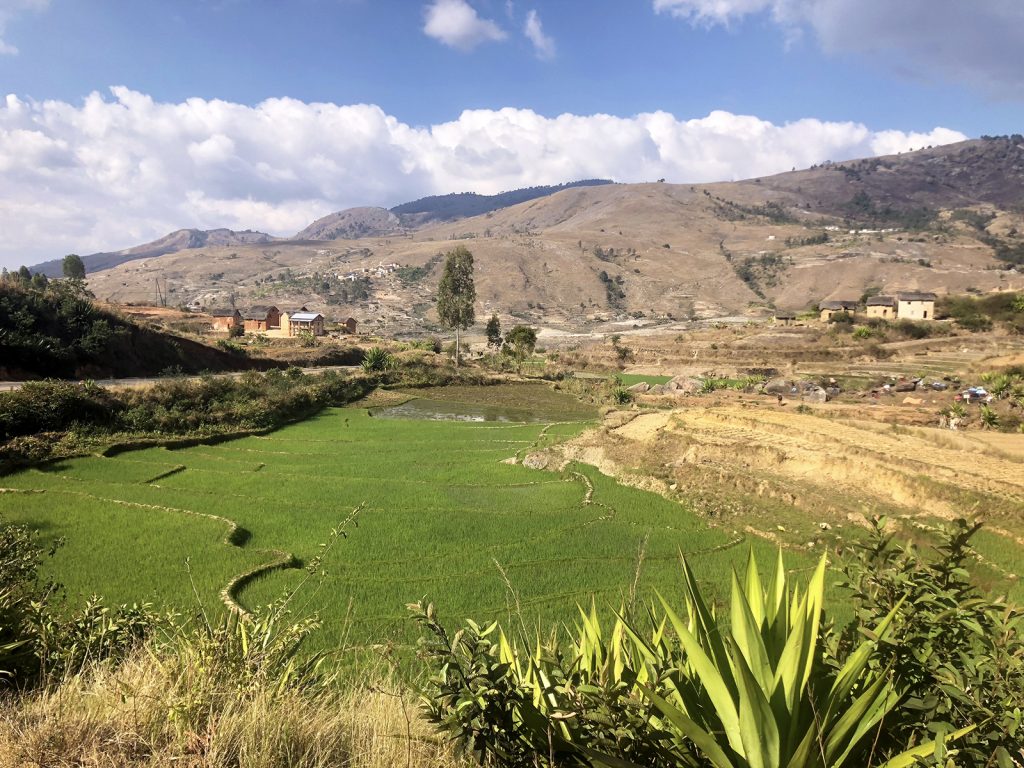
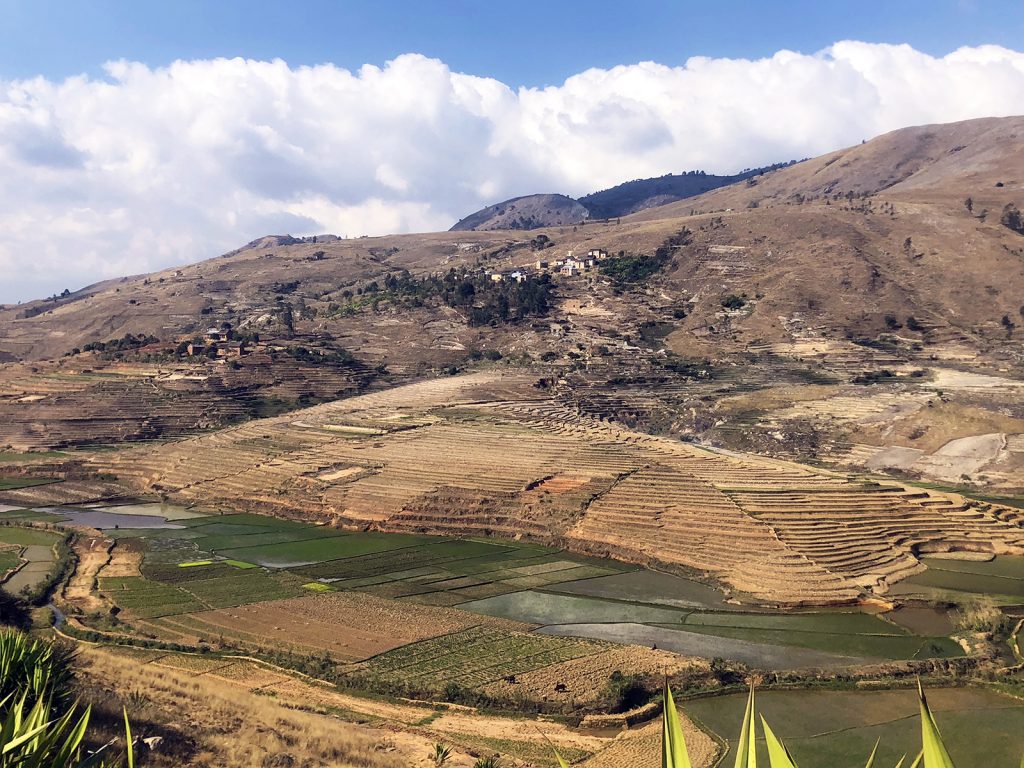
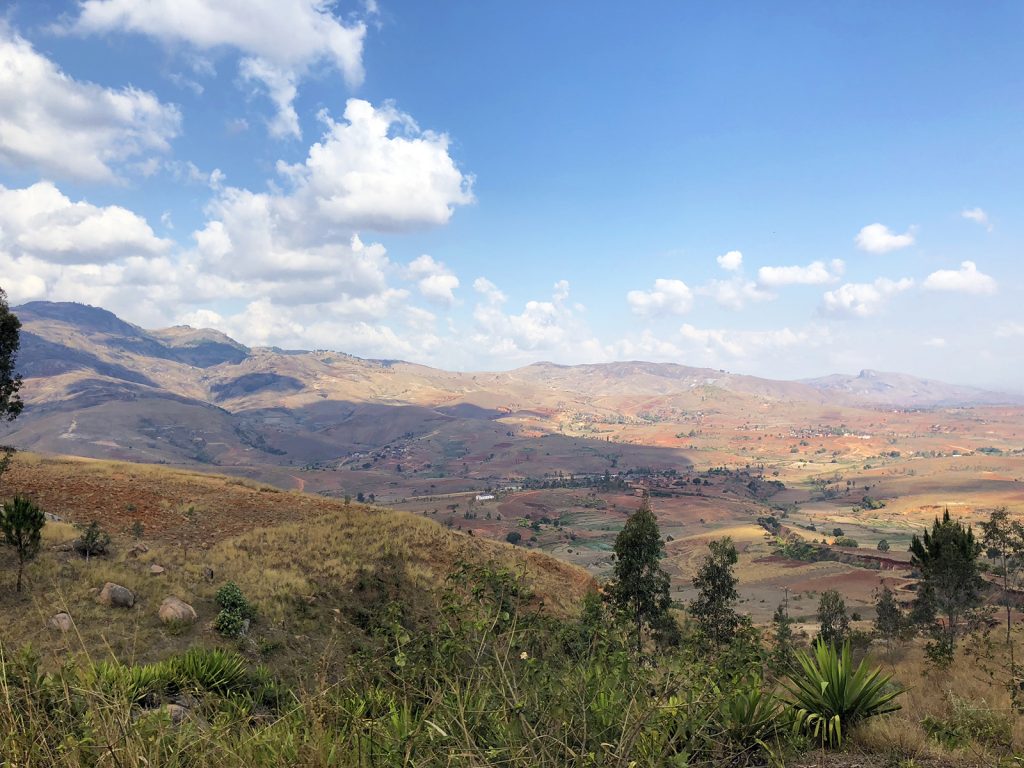
Visiting the Anja Reserve
The Anja Reserve is a little area (only about 30 hectares) in south-central Madagascar that has been protected since 2001. There are a variety of reasons it is protected in terms of wildlife (both flora and fauna), but the main reason is because it is home a high number (~300) ring-tailed lemurs, which is an endangered species.
Like the other national parks in Madagascar, you can’t walk through unless you are accompanied by a local guide, and we had another great one here. The walk starts through some open countryside, which had beautiful views in itself.
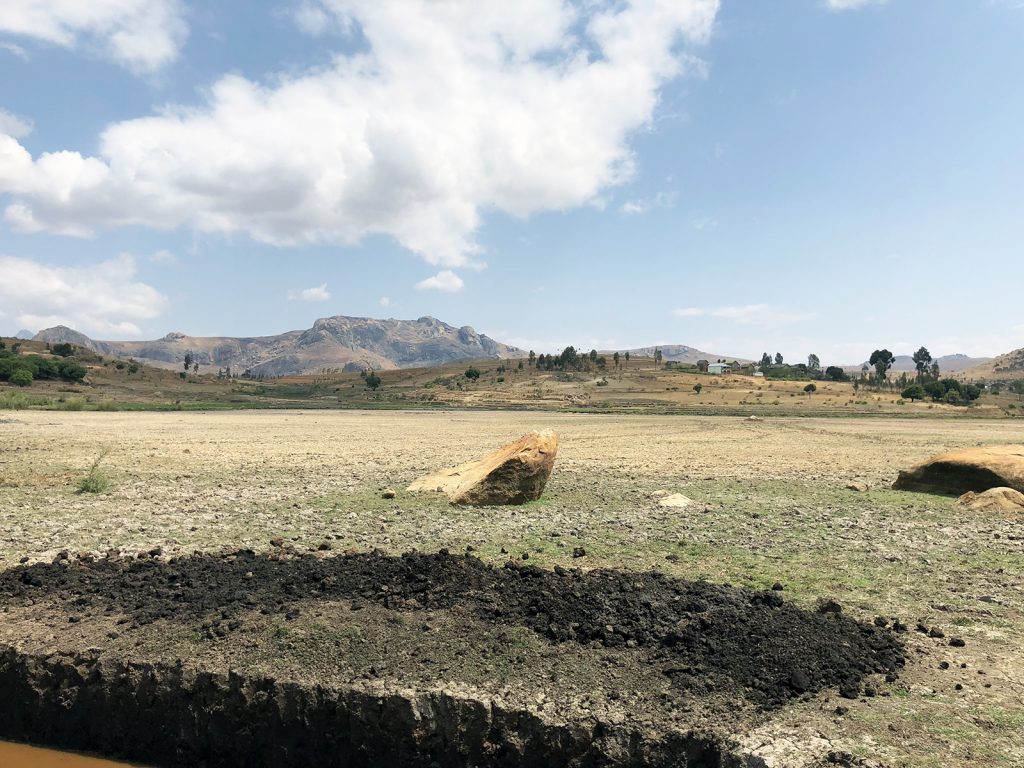
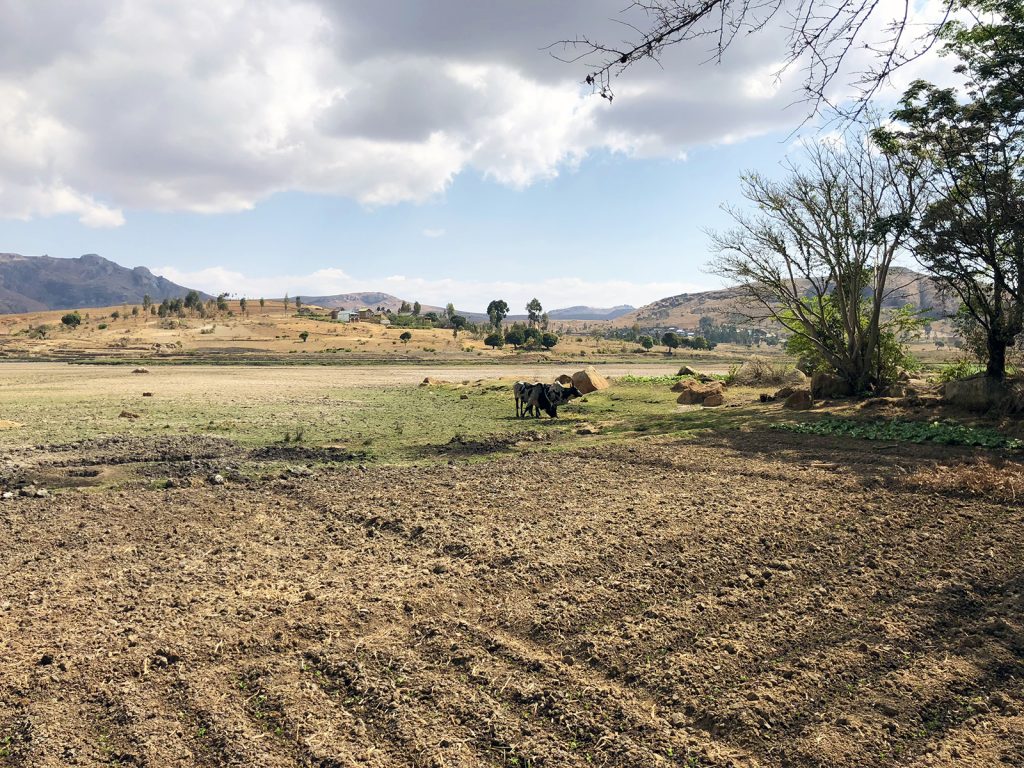
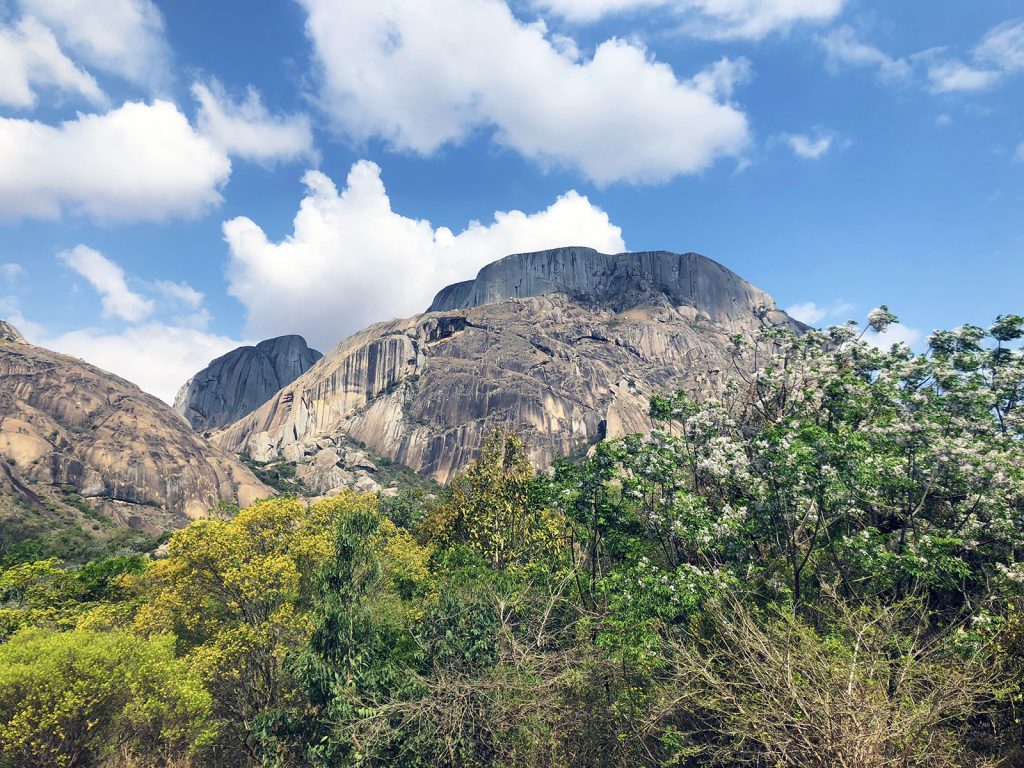
Then, as we were getting closer to the wooded part of the reserve, we started to see some cool wildlife. Before we got to the lemurs we saw this cool lizard and then the little white things on the branch. Those white things aren’t flowers or leaves or buds, they are actually insects that camouflage themselves by looking like that – isn’t nature neat?
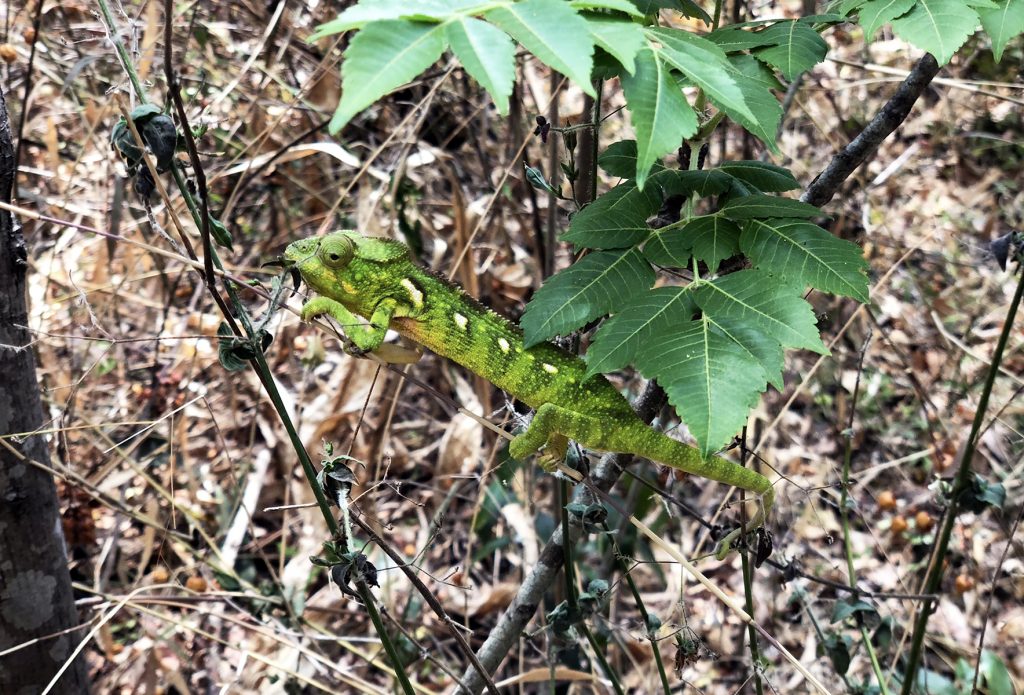
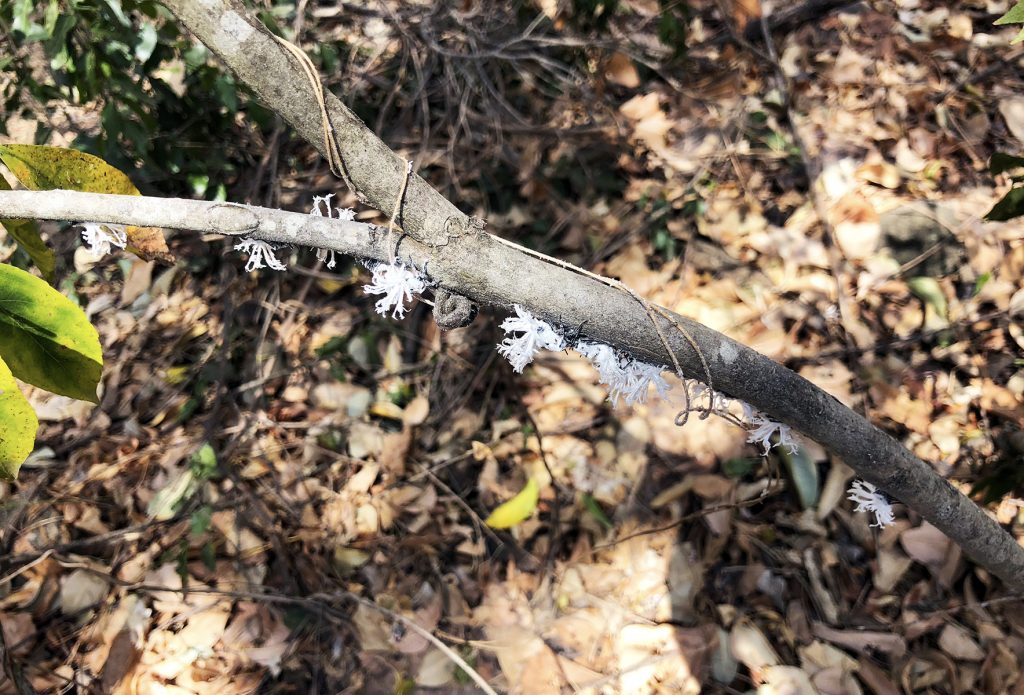
And then, it was lemur time, woohoo! Lemurs aren’t aggressive towards humans and, especially in this Reserve, they are used to humans being around them, so we were able to get quite close to some of them. It used to be that visitors were allowed to feed the lemurs, but that is no longer the case, which I think is way better for the animals!
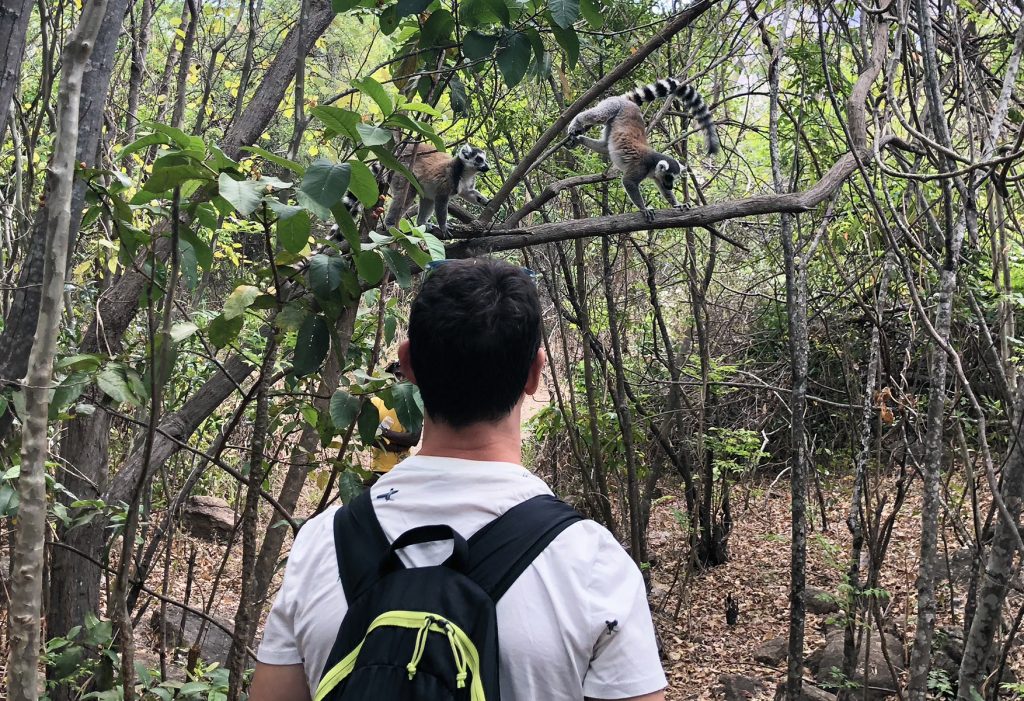
The icing on the cake here was that it was lemur baby season here! We saw so many momma lemurs with babies on their backs, jumping from branch to branch, and even saw little babies trying to learn how to jump on their own. Seriously this was just one of the cutest things I have ever seen … it’s still hard not to squeal when I look at these pictures.
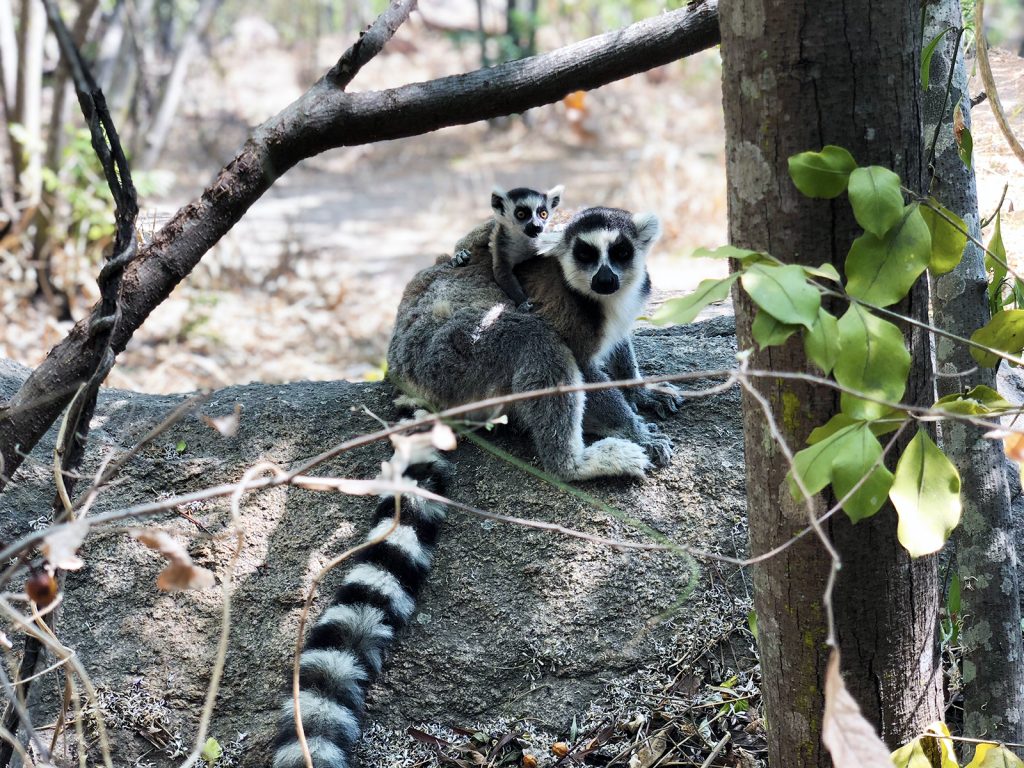
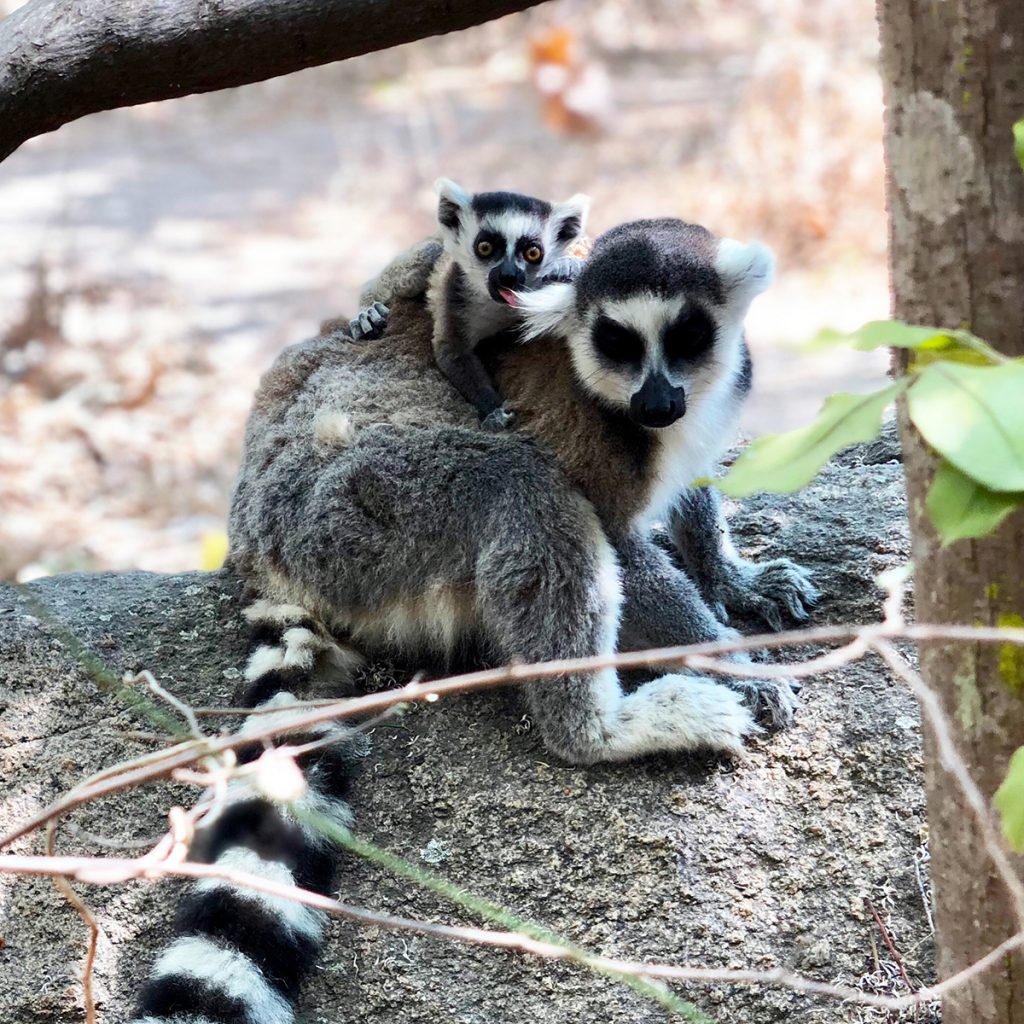
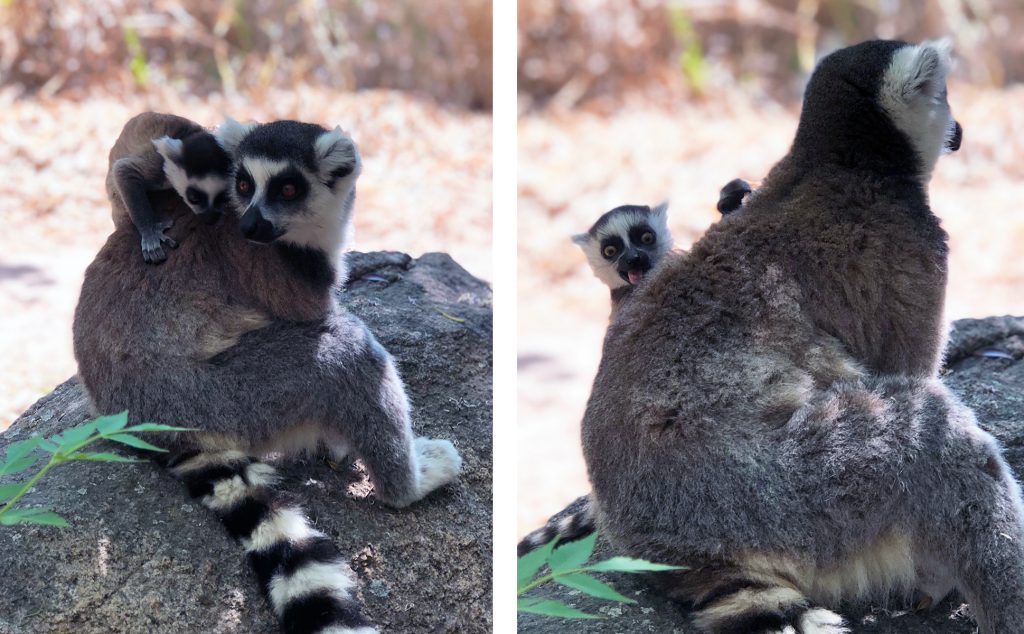
And it gets even cuter when you get to watch them all hopping around on video. We took the below video of this little guy jumping and jumping and jumping and if it doesn’t make you smile, well, then nothing will!
After finishing up at the Anja Reserve we ate lunch on site and then drove to Ranomafana National Park. The road to get there was super winding and the climate in the area changes to rainforest, so it was wet as well. It took us a bit to get to our hotel but once we did we settled in, ate a light dinner and got some rest!
Exploring Ranomafana National Park
Ranomafana National Park is in the southeastern part of Madagascar and is a UNESCO World Heritage site. It is a huge national park, at 41,600 hectares, and was established in 1991. There is a ton of interesting biodiversity here, but to me the most interesting part is that they discovered the greater golden lemur there, after it was have thought to have gone extinct. How cool is that? And how strange must it be to be a researcher, walking through the forest and being like, holy moly, is that an animal that we thought was extinct? Talk about mind-blown!
So, confession here … I was really struggling after getting sick in Isalo National Park, and was not feeling the rain, so I didn’t actually do the day excursion or the night excursion into the forest. I slept in and rested and took the day off. However, Damian did go, so I’m going to turn this part of the blog over to him! Take it away husband …
“As with all the other national parks we visited in Madagascar, this one was well organized and required that visitors have a trained tour guide with them (we also had a spotter on this one). This was good as Ranomafana National Park has one of the world’s most biologically diverse and unique ecosystems, and having people on hand to identify and explain what we were seeing was incredibly helpful. The tour guides are trained at the Centre ValBio in Ranomafana National Park, which is one of the largest and best funded research centers in Madagascar and is affiliated with Stony Brook University. My tour guide was the youngest tour guide they had ever had (and rightfully proud!) and clearly knew his stuff!
We started our day early, and the cold weather and the rain, which didn’t let up for over 24 hours, meant some of the scenic lookouts were less scenic, but it didn’t impede the viewing of the wildlife. We saw six different species of lemurs and a wide variety of other animals as we traipsed through the forest. The picture below shows the “viewing point” we stopped at late morning with a few other hikers enjoying the “vista”!
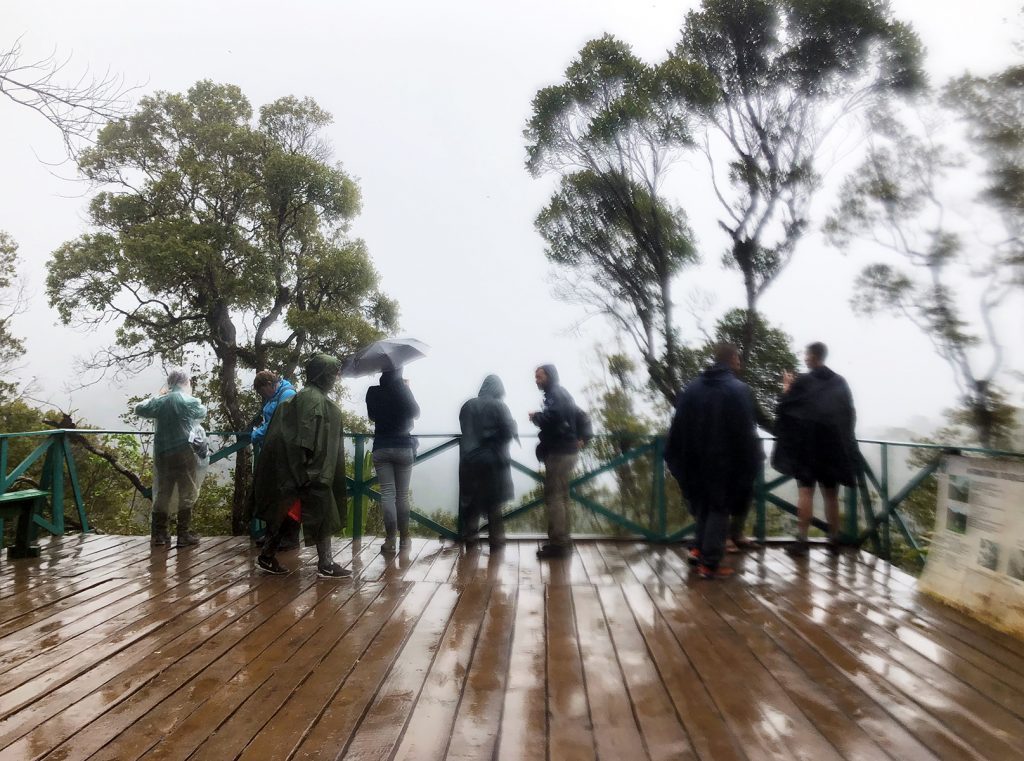
Having a tour guide and spotter all to myself meant we were able to move around quickly and efficiently and we soon found ourselves among a group of golden bamboo lemurs. As with the other lemurs we had seen, a number of these had newborn babies with them, most of which were around six weeks old and were just starting to move and explore independently.
After watching a couple different family groups we moved on as our spotter had found the greater golden lemur. This was a particularly exciting find as there are only two of them who live in this particular area (a father / daughter duo). As Jyoti said above, the greater golden lemur was thought to have gone extinct and was only rediscovered in 1986! There are only eleven identified subpopulations (~500 individuals) and they have been named one of the world’s 25 most endangered primates. Slash and burn farming and deforestation due to mining are the greatest culprits as their only natural predator is the fossa (which we sadly, but unsurprisingly didn’t see this trip). Given the rain, I didn’t capture many good pictures, but you can see the greater golden lemur in the picture below.
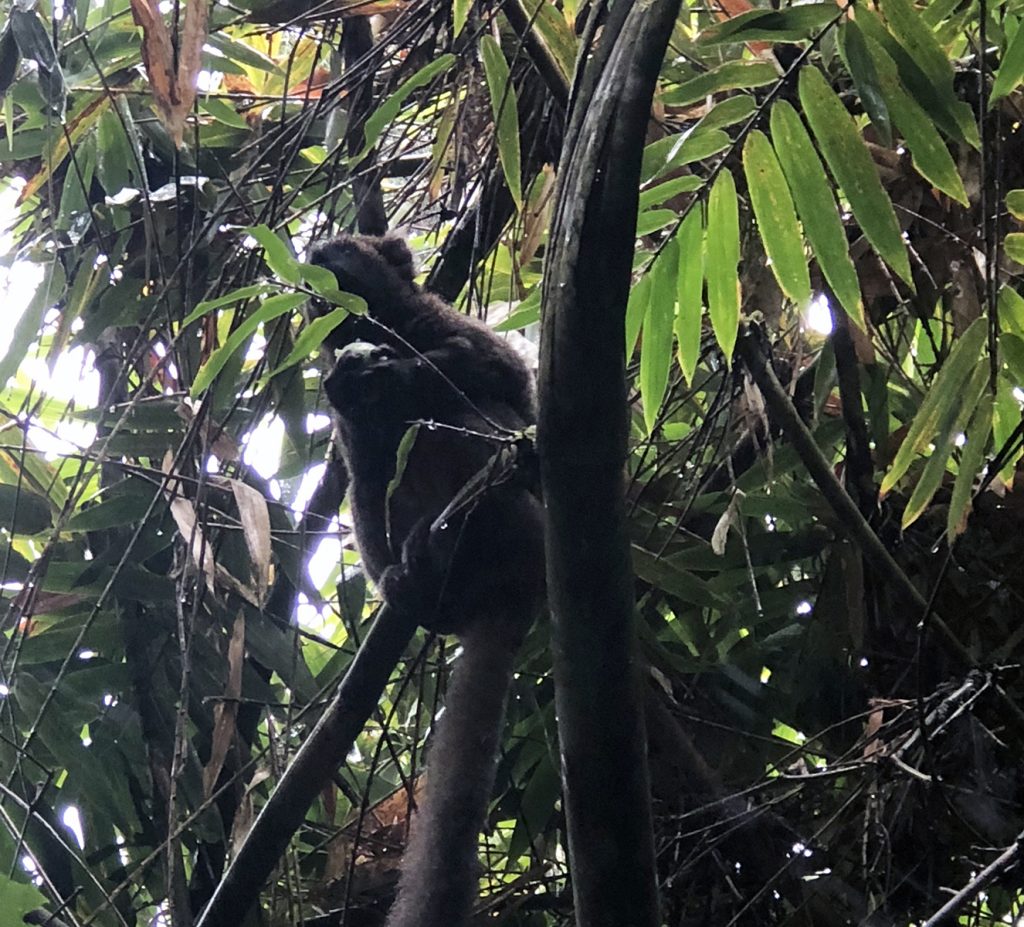
As we hiked along, we also saw families of red bellied lemurs, black and white ruffed lemurs, dwarf lemurs, and the brown mouse lemur. It was interesting to see the diversity among the lemurs as they each have evolved to have different unique traits, ranging from feeding habits, to whether they are nocturnal or diurnal, typical family/group size, body size, shape and color, etc.
Perhaps just as exciting as the lemurs, was the variety of other wildlife we saw, including a whole variety of frogs, a wide array of chameleons (Side Striped, Canopy, Short-Horned, Nose-Horned, Perinet, etc.), more bird species than I can remember, geckos (including the one Satanic Leaf Tailed Gecko pictured below – aptly named I must say!), spiders, and insects (including the giraffe-necked weevil). This was rivaled by the abundant plant species we saw, many of which are currently being studied for medicinal purposes.
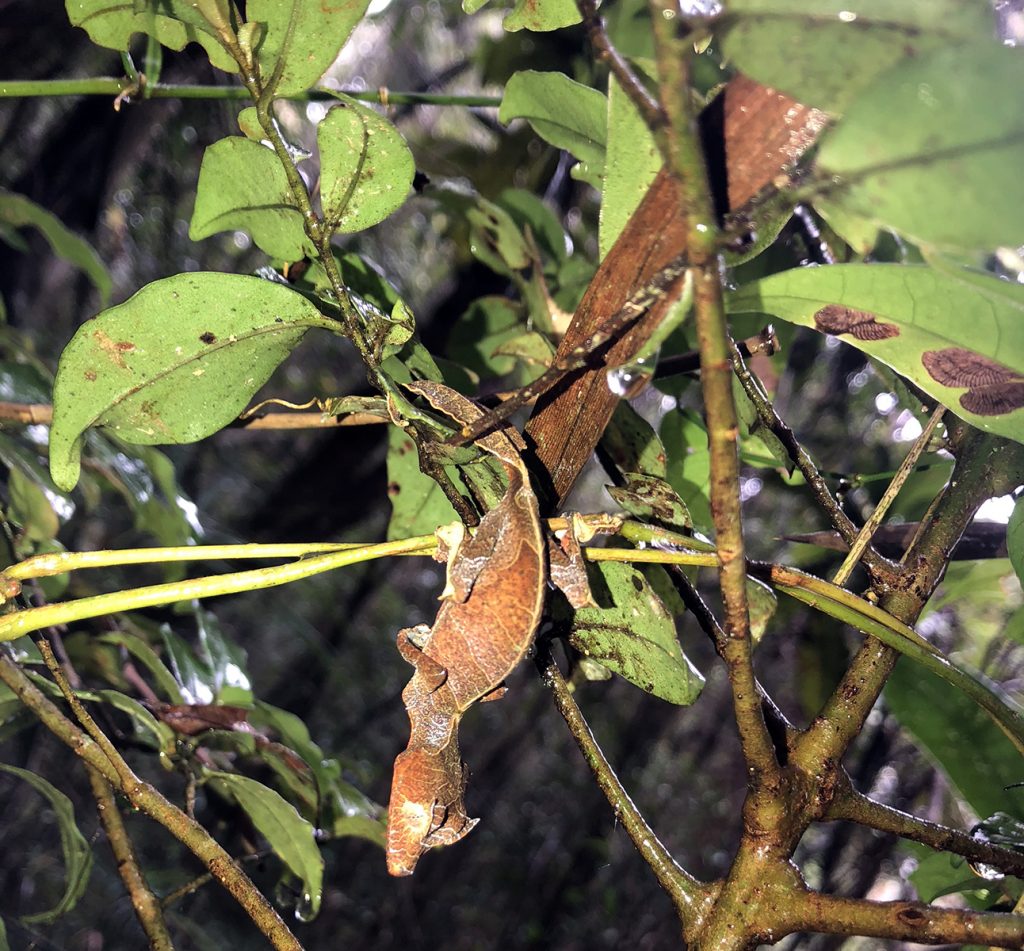
We concluded the day with a short hike at dusk to see the nocturnal species such as the mouse lemur as well as a host of frogs and chameleons. I’ve included a few pictures below of the chameleons we saw during our night hike.
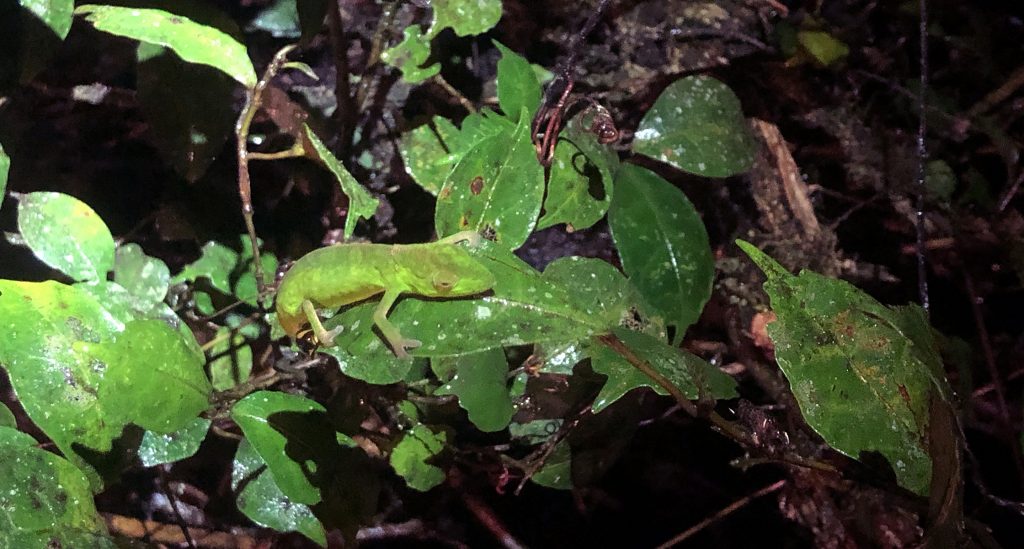
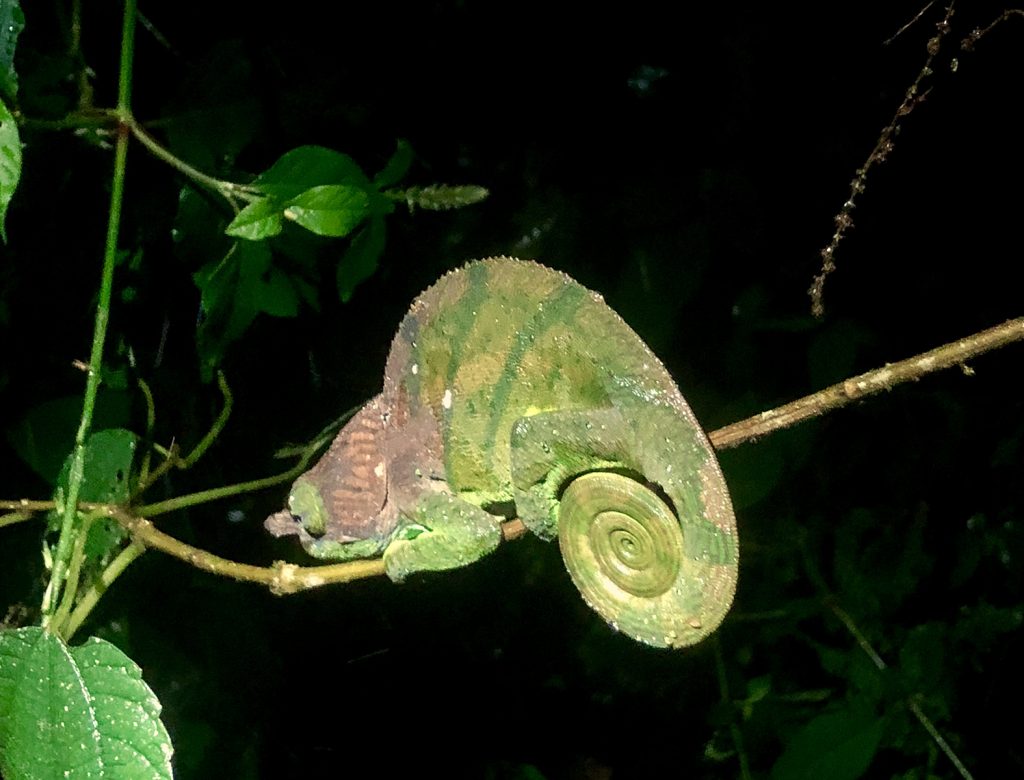
While all of that was fun, perhaps the highlight of the night for me, was pulling back a tree leaf to see a Malagasy songbird tucked in and sleeping for the night! So cute!”
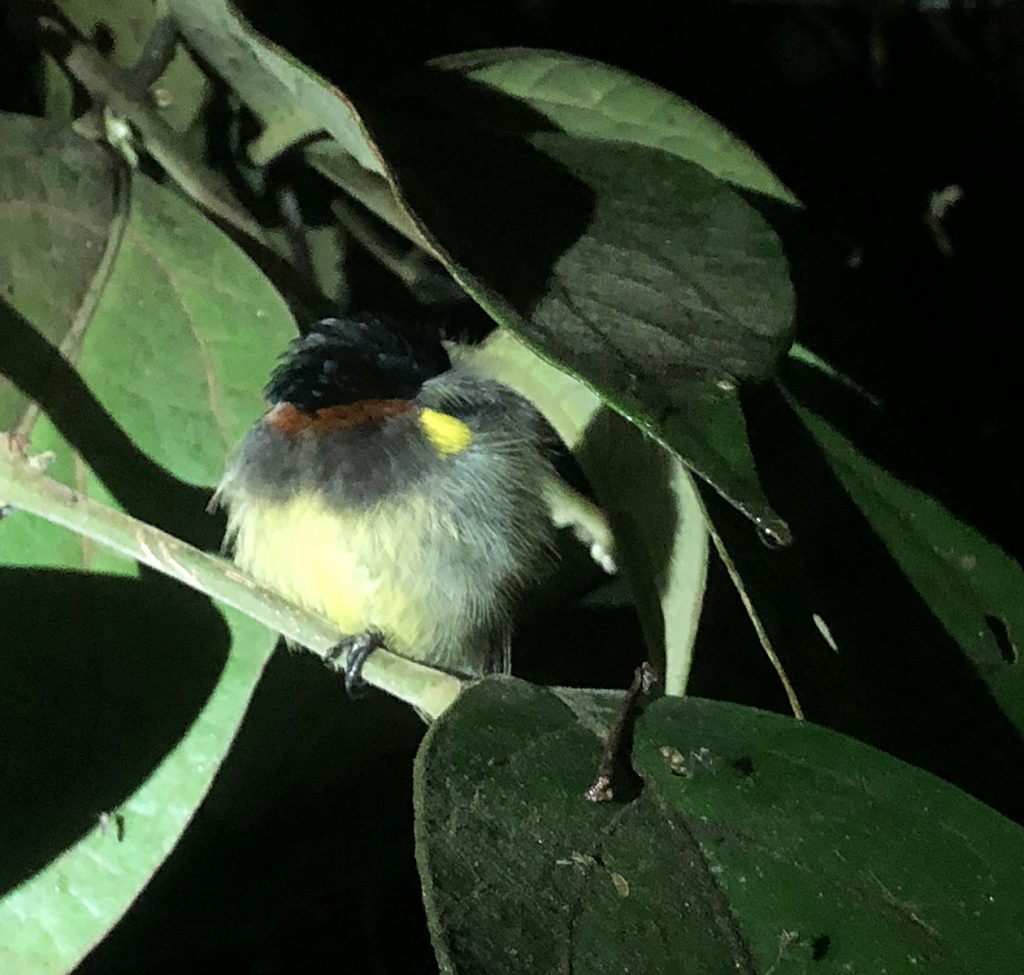
Up next – meeting the artisans of Madagascar!
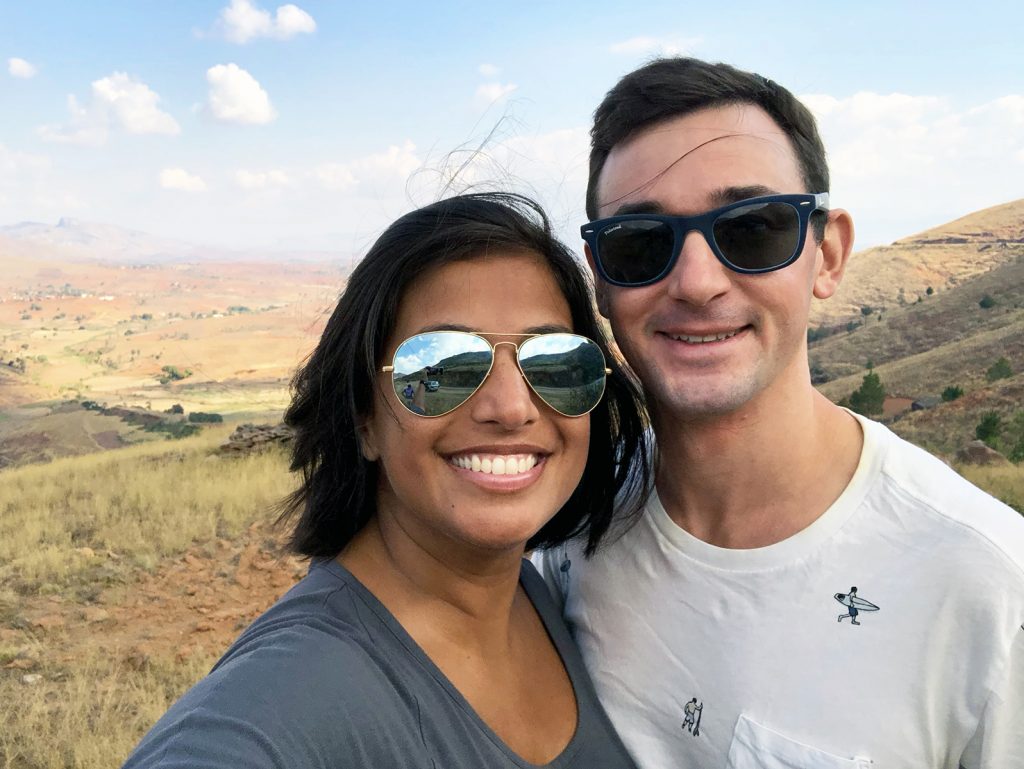
Ok, now it’s Jyoti again. We had a great time at the Anja Reserve and Ranomafana National Park, but sadly that was the end of our time in Madagascar’s National Parks (at least for this trip). For the next few days we stopped at and explored some of the towns on the drive back to Antananarivo, and got to see what some of the beautiful artisans of this country make. Coming soon!
Related Posts
UNFPA Madagascar fundraiser – please give!
TLDR: We got to see first-hand some of the amazing work UNFPA Madagascar is…
November 6, 2018A stunning Cape Town day: Cape of Good Hope, Cape Point, Boulders Beach and Chapman’s Peak Drive!
Ok, so I know I’m a bit all over the place here, writing our…
November 6, 2018


Leave A Comment